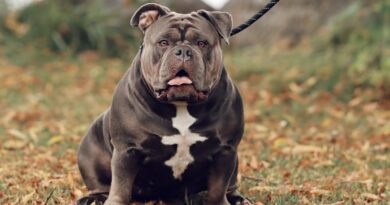Dapple Dachshund: What Most First-Time Owners Get Wrong
Dapple dachshunds captivate potential owners with their striking spotted coats, but these unique patterns often lead to costly mistakes and misconceptions. While their beautiful markings make them stand out from standard dachshunds, first-time owners frequently overlook crucial aspects of caring for these special dogs.
Many prospective pet parents rush into dapple dachshund ownership without understanding the genetic factors behind their distinctive appearance or the specific care requirements these dogs need. This comprehensive guide addresses common misconceptions, explains important health considerations, and outlines what you actually need to know before bringing one of these charming dogs home.
Understanding Dapple Patterns
The genetic makeup of dapple dachshunds creates their distinctive marbled coat pattern, primarily caused by what geneticists call the merle gene 1. This unique trait appears as lighter patches against darker base colors, creating an eye-catching mottled effect.
What makes a dapple different
The dapple pattern stems from a specific DNA variation that affects how color develops in a dog’s coat 1. Specifically, these patches can appear randomly across the body, following no geometric rules. Furthermore, dapple dachshunds may develop striking blue or partially blue eyes, also known as “glass eyes,” though this doesn’t affect their vision 1.
Common coat variations
Dapple patterns showcase remarkable diversity in their appearance. The base coat can display several colors:
- Black and tan dapples: Often mistaken for “silver” dapples
- Red dapples: These can be harder to identify as the pattern may fade
- Chocolate dapples: Feature brown base with lighter brown or tan spots
- Blue dapples: Display a stunning bluish-gray base with silver or gray patches 2
Notably, some dapples show minimal spotting, whereas others, called “reverse-dapples,” have such extensive dappling that the base color barely shows 1. Additionally, “mosaic” dapples present 2-3 shades of the base color, consequently creating a more complex pattern 1.
Spotting hidden dapples
Identifying dapple patterns can prove challenging, particularly in certain coat colors. Red dapples often pose the greatest difficulty, as their spots may fade significantly over time 3. Moreover, some dachshunds carry the dapple gene without showing visible markings – these “cryptic” or “hidden” dapples look like ordinary solid-colored dogs 4.
Professional breeders rely on genetic testing to identify hidden dapples, primarily because visual identification alone isn’t reliable 5. This testing becomes especially crucial when breeding, as unidentified dapples could lead to unintended double-dapple combinations 5. The Laboklin test offers a quick and definitive way to determine whether a dachshund carries the dapple gene, even when the pattern isn’t visible to the naked eye 5.
Health Concerns vs Reality
Many prospective dapple dachshund owners misunderstand the relationship between coat patterns and health risks. A clear distinction exists between single and double dapple dogs when it comes to medical concerns.
Single dapple health facts
Single dapple dachshunds, who inherit the merle gene from only one parent, primarily face the same health challenges as any other dachshund 6. Indeed, when bred responsibly, these dogs show no additional health complications linked to their distinctive coat pattern 7. Rather than worrying about dapple-specific issues, owners should focus on common dachshund health concerns, such as Intervertebral Disk Disease (IVDD) 6.
Nevertheless, single dapple owners should monitor their pets for increased sun sensitivity, particularly in areas with lighter-colored patches 8. Despite these minor considerations, single dapples maintain similar health profiles to their solid-colored counterparts.
Double dapple risks
The situation changes dramatically with double dapple dachshunds, who inherit the merle gene from both parents 9. These dogs face serious genetic health challenges:
- Vision Problems: From poor eyesight to complete blindness, missing eyes, or microphthalmia (unusually small eyes) 6
- Hearing Impairments: Partial or complete deafness occurs frequently 9
- Kidney Issues: Higher susceptibility to renal dysfunction 9
The genetic mechanism behind these issues involves the merle alleles (MM), which create the double dapple pattern 9. Unfortunately, some breeders prioritize achieving specific coat patterns without considering these health implications 9. The Kennel Club has taken a firm stance by refusing to register puppies bred from two dapple parents 5.
DNA testing remains crucial since dapple markings can be subtle or hidden, making visual identification unreliable 5. This becomes particularly important since breeding two dapples together, even unintentionally, can result in puppies with severe health complications 5.
Common First-Time Owner Mistakes
First-time dapple dachshund buyers often fall prey to deceptive marketing tactics and overlooked essentials that can lead to heartbreaking consequences. Understanding these common pitfalls helps ensure a healthier, happier companion.
Falling for rare color claims
Reputable breeders never advertise “rare” or “unique” colored dachshunds 10. In fact, claims about rare dapple variations primarily serve as a warning sign of unethical breeding practices. Commercial breeders often use this tactic to charge inflated prices for puppies that may face serious health challenges 11.
The Breed Standard explicitly states that apart from the standard dapple pattern, which shows lighter areas contrasting with the darker base, no white markings should appear on a dachshund’s coat except for a small chest patch 11. Undoubtedly, anyone promoting rare colors either lacks proper breeding knowledge or operates as a commercial breeder focused on profits rather than health 11.
Skipping health tests
First-time owners frequently overlook the importance of health screening, unaware that all dogs face inherited disease risks 12. Two primary types of health tests exist:
- Simple conditions with available DNA tests that identify Clear, Carrier, or Affected status
- Complex conditions requiring clinical screening programs to assess risk levels 12
Important to realize, responsible breeders utilize both DNA testing and clinical eye examinations to ensure puppy health 12. These screenings help identify conditions like Progressive Retinal Atrophy and various inherited eye diseases that can affect dachshunds 12.
Ignoring breeder credentials
Many buyers rush into purchases without properly vetting breeder credentials. Red flags that signal potential issues include:
- Advertising “all colors available” – a clear sign of commercial breeding 11
- Reluctance to provide health screening documentation 13
- Hesitation in showing parent dogs’ registration papers 13
- Charging premium prices based solely on coat color 11
- Unable to explain specific health tests performed on breeding stock 14
Legitimate breeders maintain transparent health records, openly discuss potential breed-specific issues, and prioritize puppy welfare over profit margins 13. They should readily provide proof of health screenings, including Orthopedic Foundation for Animals (OFA) certificates and eye registry documentation 13.
A trustworthy breeder builds relationships with potential buyers, openly shares their breeding practices, and maintains proper licensing where required 15. They should belong to recognized breeding organizations and follow established breeding standards rather than chasing trendy colors or patterns 14.
Daily Care Requirements
Proper daily care routines keep dapple dachshunds healthy and happy throughout their lives. Understanding their specific exercise requirements and grooming needs helps prevent common health issues while strengthening the bond between dog and owner.
Exercise needs
Adult dapple dachshunds require 45-60 minutes of moderate exercise daily 2. This activity should be split into two walks, primarily focusing on controlled physical movement that builds muscle without straining their unique body structure.
Regular exercise plays a vital role in preventing back problems. Research shows that dapple dachshunds over age three who maintain moderate to high activity levels face lower risks of spinal issues 2. However, exercise intensity should match the dog’s life stage:
- Puppies: Follow the 5-minute rule per month of age, up to twice daily 16
- Adults: 30-60 minutes of daily activity, split into shorter sessions 16
- Seniors: Shorter, more frequent walks with adjusted pace 16
Mental stimulation remains equally essential as physical exercise. Incorporate scent games and interactive play sessions during walks to engage their natural hunting instincts 2.
Grooming basics
Grooming requirements vary substantially based on coat type. Short-haired dapple dachshunds need minimal maintenance – typically a weekly brush with a soft bristle brush or grooming mitt keeps their coat healthy 17.
Long-haired varieties require more attention:
- Daily brushing to prevent tangles
- Special focus on areas behind ears and around tail
- Regular checks for matting
- Monthly professional grooming recommended 17
Wire-haired dachshunds need a different approach:
- Weekly brushing with a slicker brush
- Hand-stripping several times yearly
- Regular coat maintenance to maintain texture 17
Generally, dapple dachshunds stay relatively clean and odor-free 4. Bathing should occur every 2-3 months or when necessary, as over-bathing can strip natural oils 17. During grooming sessions, regularly check and clean their large, thick ears to prevent infections 1. Subsequently, maintain their substantial nails through monthly trimming to prevent foot problems 1.
Essential grooming tools include pin or bristle brushes for long-haired varieties, and proper nail clippers designed for their uniquely thick nails 1. Overall, establishing a consistent grooming routine early helps your dapple dachshund accept and enjoy these necessary care sessions 17.
Smart Shopping Tips
Making an informed purchase decision safeguards both your investment and your future dapple dachshund’s well-being. Accordingly, understanding current market prices and identifying trustworthy breeders becomes essential for a successful adoption process.
Price range expectations
Legitimate dapple dachshund prices from registered breeders typically range between USD 400.00 and USD 1,500.00 18. First thing to remember, adoption fees from rescue organizations offer a more affordable option, ranging from USD 200.00 to USD 400.00 19.
Several factors influence the final price:
- Health screenings and genetic testing costs
- Veterinary care and vaccinations
- Breeder’s experience and reputation
- Geographic location
Essentially, while initial costs might seem high, they reflect the extensive care and testing responsible breeders invest in their puppies. In essence, the average cost for a puppy from a registered breeder stands at USD 220.000 19.
Red flags to watch for
As a matter of fact, certain warning signs clearly indicate potentially unethical breeding practices:
- Constant puppy availability
- Reluctance to show living conditions
- Missing or incomplete vet records
- Pressure to make quick decisions
- No questions asked about your home environment
- Unwillingness to show parent dogs
- Missing health test documentation
- Lack of proper licensing
- Pushing non-refundable deposits before visits
Coupled with these red flags, be wary of breeders advertising “rare” colors or charging significantly higher prices based solely on coat patterns. Given these points, responsible breeders prioritize health and temperament over superficial traits.
Questions to ask breeders
A thorough interview process helps ensure you’re working with a reputable breeder. Key questions should cover:
Health and Testing
- What specific health screenings do parent dogs undergo?
- Can you provide documentation of genetic testing?
- What vaccinations will the puppy receive?
- Do you offer health guarantees?
Breeding Program
- How long have you been breeding dachshunds?
- Are you affiliated with any breed clubs or organizations?
- What motivates your breeding program?
- How many litters do you produce annually?
Puppy Care
- How do you socialize your puppies?
- What feeding schedule do you follow?
- When can puppies go to their new homes?
- What support do you provide after adoption?
Primarily, legitimate breeders welcome these questions and respond with detailed, transparent answers. They should, in turn, ask you numerous questions about your home environment, experience with dogs, and plans for caring for the puppy.
Remember that shipping costs can add significantly to the purchase price, potentially reaching USD 2,000.00 for air transport and required health certificates 18. Therefore, consider local breeders first to avoid these additional expenses and allow for in-person visits.
A trustworthy breeder maintains open communication throughout the process and provides comprehensive documentation, including registration papers, health records, and written guarantees. They focus on finding the right homes for their puppies rather than making quick sales.
Ultimate Guide
Dapple dachshunds certainly charm potential owners with their striking coats, though successful ownership demands more than appreciation for their unique appearance. Understanding genetic factors, health considerations, and proper care requirements proves essential for a happy, healthy companion.
Responsible ownership starts with selecting a legitimate breeder who prioritizes health over coat patterns. While single dapples share similar health profiles with standard dachshunds, careful screening helps prevent unintended double-dapple breeding and associated complications.
Smart buyers look beyond marketing claims about rare colors, instead focusing on health documentation, breeder credentials, and proper care practices. Regular exercise, appropriate grooming routines, and consistent veterinary care help ensure these distinctive dogs thrive throughout their lives.
First-time dapple dachshund owners who take time to research, ask questions, and prepare for their new companion significantly increase their chances of success. Rather than rushing into ownership based on appearance alone, careful consideration of all aspects – from genetic health to daily care requirements – leads to lasting, rewarding relationships with these special dogs.



